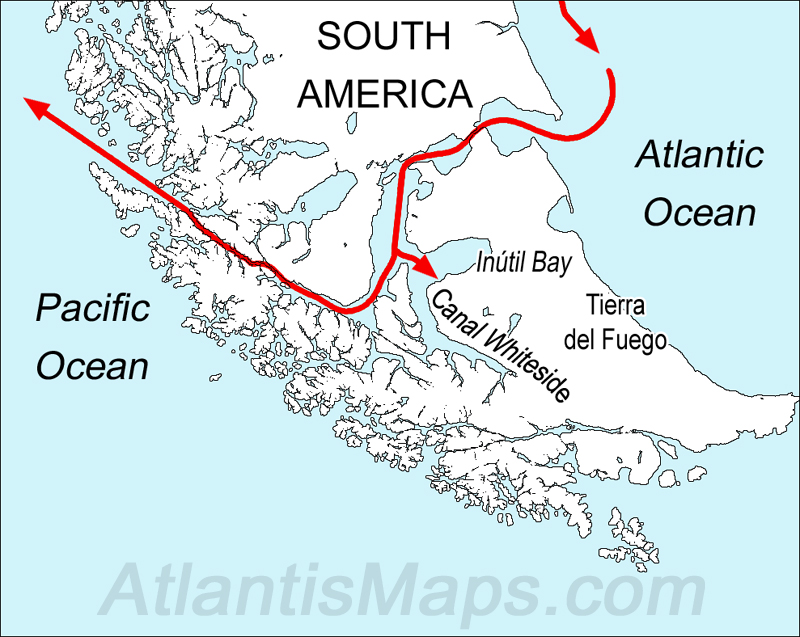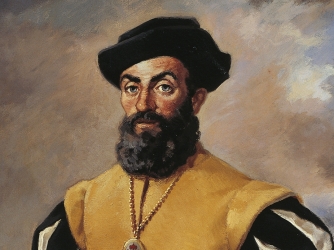Social Sciences
Hi classmates!
Today in History I'm going to talk about Magellan Strait.
The Strait of Magellan, is a navigable sea route separating mainland South America to the north and Tierra del Fuego to the south. The strait is the most important natural passage between the Atlantic and Pacific oceans but it is considered a difficult route to navigate because of the unpredictable winds and currents and the narrowness of the passage.

Ferdinand Magellan, a Portuguese explorer and navigator in the service of Charles I of Spain, became the first European to navigate the strait in 1520 during his global circumnavigation voyage.

On March 22, 1518, the expedition was organized in Valladolid, naming Magellan captain general of the fleet and governor of all the lands discovered. The fleet would become known as the "Armada de las Molucas" or "Fleet of the Moluccas". It was composed of five ships:
- This Day In History: Signature Of The Peace Of The Pyrenees
Hi, classmates! Today I want to explain you ''The Treaty of the Pyrenees''. The Treaty of the Pyrenees was signed on 7 November 1659 to end the war between France and the Hispanic Monarchy. This was a war that was initially a...
- Thursday, 12th November 2015
Hi! Today I want to show you what we?ve done this morning in Social Sciences class.At the beginning of the class, we?ve reviewed what we did on Tuesday. Paqui has made a short summary which included: the Reasons of the discontent, how they declared independence...
- This Day In History: Charles I's Coronation And The End Of The Revolt Of The Comuneros
Hey friends! It's Lucía. Today is my turn to explain what happened years and years ago. Yes! This is a new chapter of... THIS DAY IN HISTORY! And as you have seen in the title, today we have double event. FIRST EVENT: CHARLES I'S CORONATION....
- This Day In History: The Battle Of Lepanto
On the 7th October 1571 the Holy League fleet captained by John of Austria defeated Suleyman the Magnificent's fleet in the Gulf of Lepanto, near the coast of Greece. This battle was decissive, because it stopped the Turk threat in the Eastern Mediterranean, ...
- Security In The Asia-pacific Region
APP Member organization, Asia Society Washington Center presents Maintaining Security and Stability in the Asia-Pacific Region A Conversation with Admiral Robert WillardCommander, U.S. Pacific Command Thursday, February 17, 201112:15 pm to 2:00 pm Admiral...
Social Sciences
Today in History: the Magellan Strait
Hi classmates!
Today in History I'm going to talk about Magellan Strait.
The Strait of Magellan, is a navigable sea route separating mainland South America to the north and Tierra del Fuego to the south. The strait is the most important natural passage between the Atlantic and Pacific oceans but it is considered a difficult route to navigate because of the unpredictable winds and currents and the narrowness of the passage.

Source: https://www.google.es/search?q=magellan+strait&es_sm=93&source=lnms&tbm=isch&sa=X&ved=0CAgQ_AUoAmoVChMIlLDchLTUyAIVw0IUCh3BKgA1&biw=1280&bih=699#imgrc=_1OKcDj9x_qLJM%3A
Ferdinand Magellan, a Portuguese explorer and navigator in the service of Charles I of Spain, became the first European to navigate the strait in 1520 during his global circumnavigation voyage.

Source: https://www.google.es/search?q=magellan+strait&es_sm=93&source=lnms&tbm=isch&sa=X&ved=0CAgQ_AUoAmoVChMIlLDchLTUyAIVw0IUCh3BKgA1&biw=1280&bih=699#tbm=isch&q=Ferdinand+magellan&imgrc=sVLEn0hteA9ErM%3A
-La Trinidad under the command of Magellan
- La San Antonio under the command of Juan de Cartagena
- La Concepción under the command of Gaspar de Quezada
- La Victoria under the command of Luis de Mendoza
- La Santiago under the command of Juan Rodríguez Serrano
Magellan's ships entered the strait on November 1, 1520, All Saints' Day, and it was initially called Strait of All Saints. Magellan's chronicler, Antonio Pigafetta, called it the Patagonian Strait, and others Victoria Strait, commemorating the first ship entering it. Within seven years it was being called Magellan Strait in honor of Magellan.
- La San Antonio under the command of Juan de Cartagena
- La Concepción under the command of Gaspar de Quezada
- La Victoria under the command of Luis de Mendoza
- La Santiago under the command of Juan Rodríguez Serrano
Magellan's ships entered the strait on November 1, 1520, All Saints' Day, and it was initially called Strait of All Saints. Magellan's chronicler, Antonio Pigafetta, called it the Patagonian Strait, and others Victoria Strait, commemorating the first ship entering it. Within seven years it was being called Magellan Strait in honor of Magellan.
- This Day In History: Signature Of The Peace Of The Pyrenees
Hi, classmates! Today I want to explain you ''The Treaty of the Pyrenees''. The Treaty of the Pyrenees was signed on 7 November 1659 to end the war between France and the Hispanic Monarchy. This was a war that was initially a...
- Thursday, 12th November 2015
Hi! Today I want to show you what we?ve done this morning in Social Sciences class.At the beginning of the class, we?ve reviewed what we did on Tuesday. Paqui has made a short summary which included: the Reasons of the discontent, how they declared independence...
- This Day In History: Charles I's Coronation And The End Of The Revolt Of The Comuneros
Hey friends! It's Lucía. Today is my turn to explain what happened years and years ago. Yes! This is a new chapter of... THIS DAY IN HISTORY! And as you have seen in the title, today we have double event. FIRST EVENT: CHARLES I'S CORONATION....
- This Day In History: The Battle Of Lepanto
On the 7th October 1571 the Holy League fleet captained by John of Austria defeated Suleyman the Magnificent's fleet in the Gulf of Lepanto, near the coast of Greece. This battle was decissive, because it stopped the Turk threat in the Eastern Mediterranean, ...
- Security In The Asia-pacific Region
APP Member organization, Asia Society Washington Center presents Maintaining Security and Stability in the Asia-Pacific Region A Conversation with Admiral Robert WillardCommander, U.S. Pacific Command Thursday, February 17, 201112:15 pm to 2:00 pm Admiral...
